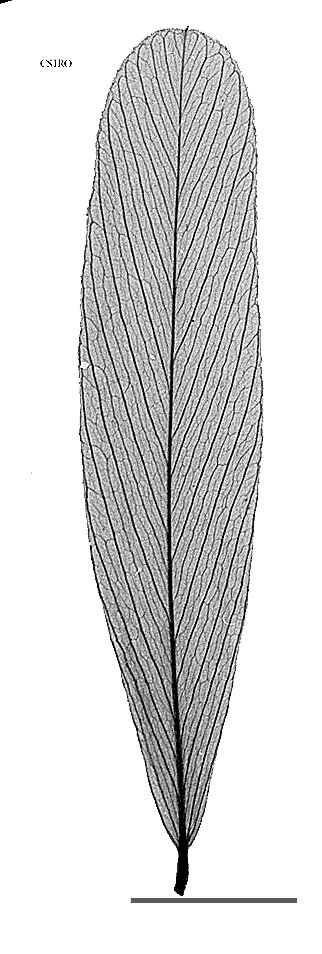Australian Tropical Rainforest Plants - Online edition
Tephrosia rosea F.Muell. ex Benth.


Bentham, G. (1864) Flora Australiensis 2: 211. Type: N. Australia. Montague Sound, N.W. coast, A. Cunningham; Victoria river and Depot Creek, F. Mueller.
Flinders River Poison
Usually flowers and fruits as a shrub about 1-2 m tall.
Terminal leaflet slightly longer than the lateral leaflets. Leaflet blades about 6-52 x 2-13 mm. Leaflet stalks about 1-8 mm long. Stipules about 2-3 mm long. Lateral veins about 10-15 on each side of the midrib running +/- parallel to one another from the midrib towards the leaflet blade margin. Both the upper and lower leaflet blade surfaces densely clothed in pale appressed hairs.
Flowers about 7 mm diam Calyx densely clothed in sericeous hairs. Calyx tube about 1.5 mm long, lobes unequal, up to 2 mm long. Corolla about 7.5 mm long. Stamens10, the filaments of nine stamens fused to form a tube long open on one side. The filament of one stamen completely free from the others. Stamens alternately long and short. Ovary hairy, elongated. Ovules about seven per ovary.
Fruits about 30 mm long, densely clothed in sericeous hairs. Seeds about 6-8 per fruit. Seeds elliptic, about 2 mm long. Radicle thinner and shorter than the cotyledons.
Features not available.
Occurs in WA, NT, NEQ and southwards and a wide area of inland Australia. Altitudinal range in northern Australia from near sea level to 350 m. Grows in a variety of habitats, sometimes found in monsoon forest and vine thicket. Often associated with alkaline soils Hacker (1990).
This species has been used as a fish poison. Kenneally et al. (1995). Unpalatable, but despite its common name, there is no evidence that it is toxic to stock. Has been used as a fish poison. Hacker (1990).





